During the past few years as an agency marketer, I’ve seen a bunch of awesome B2B SaaS and tech companies go all-in on inbound marketing – and fail miserably. In other words: too often inbound marketing is failing to deliver any measurable return on investment for growth-seeking B2B companies.
So does this mean inbound marketing is finally dead in the 2020s?
Probably not. On the contrary, I would argue that inbound marketing is still very much alive and kicking in 2020 and beyond.
Then why do so many companies fail in their inbound attempts, and why does it keep happening over and over again and even to the best of us?
That's exactly what this blog post will be all about, so keep reading.
In this post, I’ll outline:
The 3 fundamental flaws of inbound marketing in the 2020s:
Reason #1: No approach works for all businesses
Reason #2: The market has matured, but the playbook hasn’t
Reason #3: Companies focus on tactics over strategy
A 3-step checklist: Will inbound marketing work for your B2B business?
Step 1: Business goals and growth strategy
Step 3: Target audience and customer acquisition model
Closing remarks: How to move forward and improve your B2B inbound marketing
And psst: If you're interested in this topic, stay tuned for more (and subscribe to our Advance Insider newsletter to make sure you won't miss any future posts! )
Let's jump right in!
The 3 fundamental flaws of inbound marketing in the 2020s
Let's start with a quick history lesson.
Back in the late 2000s and early 2010s, early adopters got really excited about this cool new thing called inbound marketing — and for good reason: it focused on having potential customers come to the company rather than marketers desperately vying for their attention.
The new paradigm stood for people consuming marketing content voluntarily (because it’s so darn good and actually helpful), rather than having some high-level crap foisted onto them basically anywhere they go online.
And back then, this mindset shift from push to pull was a true game changer for many marketers.
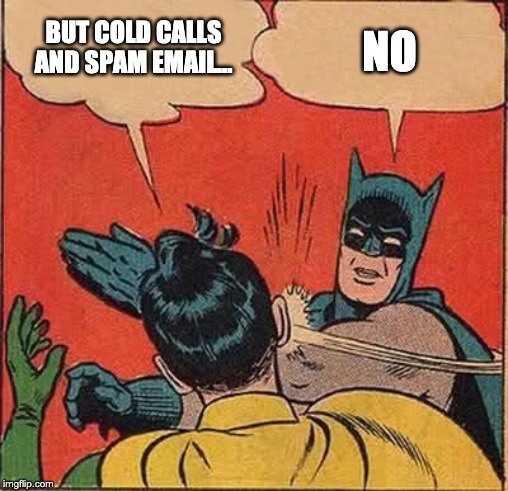
Enlightened marketers then started to put together buyer persona cards, buyer journeys and sales funnels, invest in automation tools, create SEO content, gate high-intent content to capture leads, and build drip campaigns to nurture those leads.
And for many years, this inbound marketing playbook actually worked quite nicely for many companies – until it started showing signs of exhaustion at some point in the 2010s.
But why is this happening? Let’s move forward and right into the 3 root causes.
Reason #1: No approach works for all businesses
Let's start with the most obvious reason: inbound is not a silver bullet.
Consider two different companies:
Company A is selling a SaaS project management tool that suits anyone, but is especially designed for agile developer teams. Their primary target audience is lead developers and technical project managers in hi-tech SMBs.
Company B is selling ERP software for multinational enterprises in manufacturing. Their primary target audience is CIOs and COOs in those companies.
Newsflash: the same marketing playbook won’t work for both companies.
Let's take a look at company A first. For them it can make all the sense in the world to go all in for inbound marketing:
- In tech-driven SMBs, making a purchase decision is agile and decision-makers often have the authority to make bottom-up purchase decisions whenever they feel like it, especially when the cost isn’t very high. And if you have a product that’s compelling enough and easy to start using, they might feel like buying the very moment they find out about it.
- The target audience mostly consists of techies who are constantly looking for better alternatives (networks, Google, social, forums, you name it!) — especially in high-tech companies, where people are generally open to new solutions.
- The TAM (= total addressable market, aka potential customer base) is huge, and average deal size quite small, so it makes sense to use a scalable customer acquisition channel that requires minimum human touch.
- Buying a project management tool (or getting a freemium) is easy and quick, the go-to-market strategy often product-led and sales process low-touch (if no touch at all). So basically your product and/or your website can sell the product for you.
- The product is simple (and customer onboarding easy) and the audience is already familiar with the concept of a project management tool. The topic is well understood and the problem and the solution are both already identified, but the solution is still complicated enough for people to look it up on Google.
In this case, tactical inbound marketing will probably work wonders.
Now let’s take look at company B. Inbound marketing might make a lot of sense at first glance, but upon closer examination, it’s easy to spot the issues:
- In enterprises, the buying process consists of several stages and involves multiple people, and making any decision can take ages, especially when it comes to fundamental software changes such as ERP. The sales model requires a lot of human touch from the very beginning, which is hardly scalable.
- Switching to a new ERP isn't exactly the same as getting a new cloud-based project management tool, so company B’s go-to-market strategy is probably sales-led, and the sales process is likely to be high-touch. Quality content can be a huge asset during the sales process, but one gated whitepaper won’t result in a sales opportunity any time soon.
- The average deal size is huge, but the number of target accounts (or ideal customers) is probably very limited (from tens to hundreds or thousands). In this situation, traditional inbound marketing would be a lot like shooting in the dark, and injuring a lot of innocent bystanders (people who are not potential customers).
- The solution (ERP software) is definitely well known, although extremely complex and not easy to compare or use —but still rarely Googled by experienced enterprise CIOs or actually anyone involved in the process. Why? Because they all understand the complexity and rather listen to their networks and trusted technical advisors than random LinkedIn sales pitches or vague content marketing “(10 reasons why you should consider buying a new ERP,” anyone?)
For company B, inbound marketing might work just fine for long-term brand building and demand generation, but probably not so well for hyper-tactical lead generation, unless maybe combined with carefully curated account-based ad campaigns.
The list goes on, but you probably got the point already:
Traditional inbound marketing is far from a “one-size-fits-all” solution.
For some reason, marketers just tend to treat it as one.
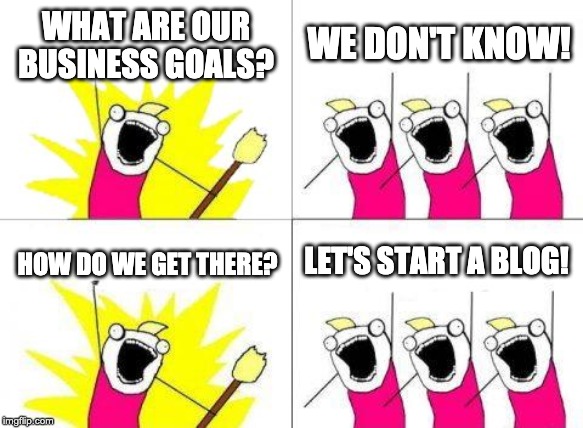
Put in simple terms: the single biggest reason why inbound marketing doesn't work for so many companies is simply that inbound doesn’t serve all needs — regardless of how well marketers are able to execute the tactics and techniques.
Reason #2: The market has matured, but the playbook hasn’t
The second reason is that the inbound playbook is, well, simply a bit outdated.
Inbound marketing might have worked wonders some 5 years ago, but fast forward to 2020, and the game has changed drastically — mostly because the market has matured.
As opposed to the early days, literally, everyone does inbound marketing in the late 2010s and early 2020s— not just a few visionaries. Unfortunately, the techniques are still more or less the same as they always were (except for maybe chatbots). And as competitors replicate the techniques and shower the market with inbound content, the cost of competing through content goes up and the benefits inevitably go down.

Search query interest for the keyword "inbound marketing" has been steadily growing for years in the US – until 2017, when it peaked and started to decrease.
By and large, inbound marketing has traditionally leaned on earned and owned media, and especially on organic SEO.
This, however, is also changing — and the lowest-hanging fruit have been plucked long ago.
Today, Google strongly favors topicality over individual keywords, and relevance, authenticity and authority over quantity, which forces marketers spend more and more time with their SEO strategies. At the same time, organic reach in social has decreased tremendously. And as most marketing channels are becoming pay-to-play, paid social too is becoming more and more expensive. And if that wasn't enough, remarketing too is becoming more and more difficult, as cookies are slowly going away.
Meanwhile, customers have also developed a nose for cheap tricks, and learned to look for in-depth quality content instead of settling for the generic high-level fluff they've been exposed to for so long (how about I list you 10 reasons to finally get rid of those freakin’ listicles?).

To top it all off, Google is actually slowly transitioning from search engine (= an acquisition channel) to an answer machine. While organic SEO isn't going to die any time soon, it's going to change a lot because Google is answering more and more questions by itself with featured snippets. No clicks, no visitors, no profit.
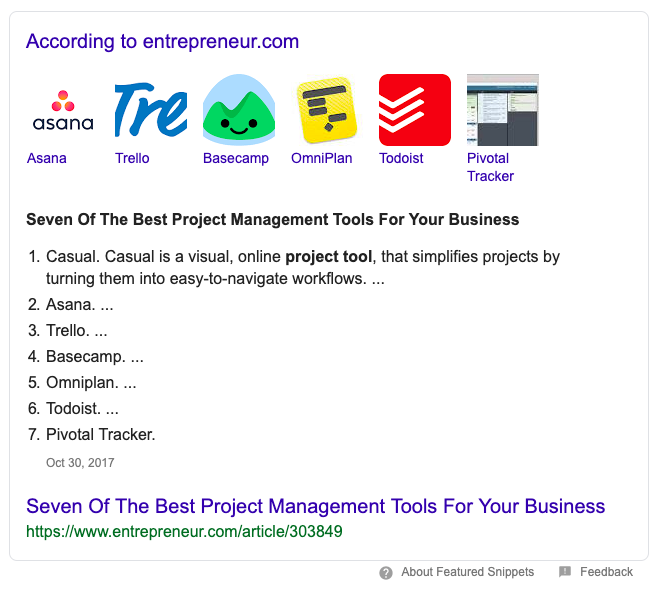
With all that being said, I think it’s safe to argue that the traditional inbound marketing playbook was built for the previous era of digital marketing.
And while winning in inbound marketing is still definitely possible in 2020, it can be extremely demanding, especially in the most competitive markets.
Reason #3: Companies focus on tactics over strategy
The third and final reason for inbound marketing not to work is that companies are simply doing it wrong.
The concept of inbound marketing is undeniably well productized, which also makes it easy to adopt — so easy, actually, that it’s tempting to just hop on the moving train without further consideration.
An inbound marketing playbook (just as any other well-productized solution) is psychologically extremely appealing.
By wrapping up the uncontrollable chaos in a neat little package that consists of funnels, personas and all that, inbound marketing (presumably) allows us a convenient and easily applicable framework for dealing with complex marketing environments.
Too bad that most simple explanations are too good to be true, and so is inbound marketing.
Unfortunately, that's just very easy to forget when you get a wee bit too excited about that cool new thing (and let’s be honest— we’ve all been there, I'm the first one to admit that 👋).
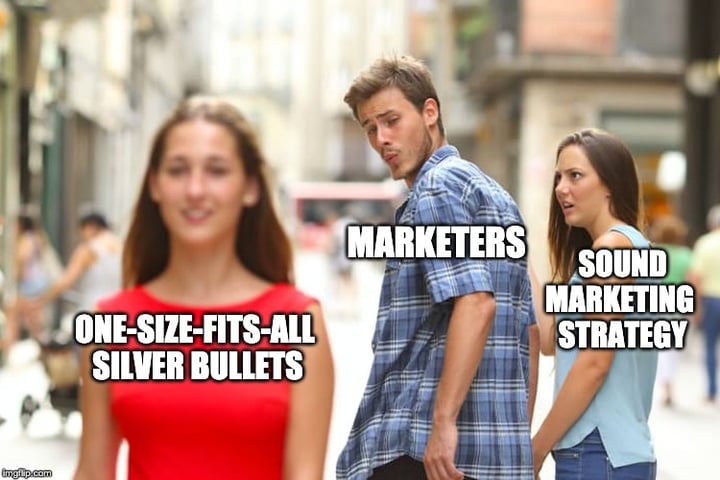
The obvious problem with ready-made solutions is that if the chosen marketing playbook doesn’t support the overall business strategy, perfect execution of techniques and tactics won’t help much. And soon enough, you’ll just end up echoing the choir of marketers who just couldn't get inbound to work for them.
In the early days, inbound techniques worked for so many companies simply because it was something new — regardless of whether it was strategically a good choice for the company.
But as we saw earlier, once the market matures, those companies inevitably lost their first-to-market advantages.
A whole other story is that while (at least technically speaking) inbound refers to any marketing techniques that use the pull effect instead of push, we marketers are extremely good at keeping ourselves busy focusing on the lead generation pipeline only, instead of the whole customer journey – long-term demand generation and brand building, sales opportunities and closed deals, shortening sales cycles, higher customer lifetime value, and better customer engagement and retention.
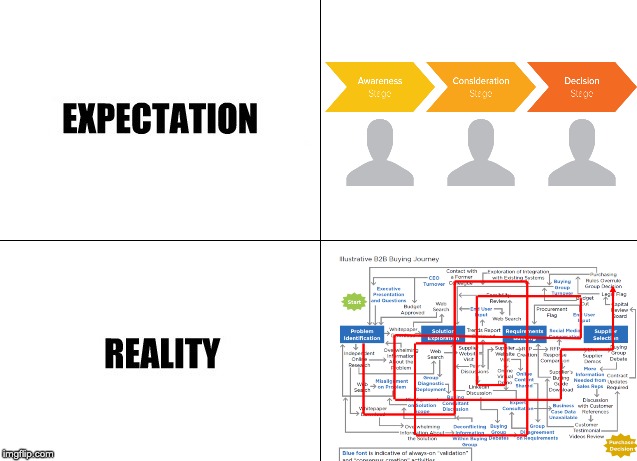
B2B buyer's journey, expectations vs. reality. Original image sources: here and here.
Heck, we even have a saying here at Advance B2B:
If all you have is inbound, everything looks like a funnel.
(I may or may not have just come up with the saying, but I love it anyway. Feel free to quote me.)
This brings us nicely to our next topic: how do you know if you can expect inbound marketing to work for your business, and how should you go about choosing the right marketing approach?
A 3-step checklist: Will inbound marketing work for your B2B business?
As we just learned, a good rule of thumb is that if you notice that something isn't working as expected, you should always start by re-evaluating your marketing approach at the strategic level rather than zeroing in on tactics and operations.
Easier said than done, so we put together a handy checklist to help you focus on the right things from the get-go. Here's what you should focus on:
- Step 1: How are you planning to grow your business? (Business goals and growth strategy)
- Step 2: In what context are you going to do that? (Market and category)
- Step 3: Who’s going to buy your product and how? (Target audience and customer acquisition model)
(Note, that this is not a comprehensive list, and while won’t give you absolute best answers, it will hopefully get you started.)
Step 1: Business goals and growth strategy
Ask this question: What’s your current business growth stage and maturity level, and how should it dictate your marketing goals and tactics?
Inbound marketing is a long game, so it’s not suitable for companies in need of quick wins.
If you’re only just starting out (or expanding to a new market) and under pressure to acquire new customers yesterday with very little resources to prove the product-market fit, inbound marketing probably isn’t your go-to option.
(I'm not even going to mention those companies that choose to go for the quick wins over more sustainable growth, even if they would totally need to play the long game.)
On the other hand, if you’re doing marketing for an established business or already in the expansion stage, inbound is probably a viable option for demand and lead generation, as well as long-term brand awareness and positioning.
✅ The primary goal is long-term demand generation (long game)
⛔️ The primary goal is lead generation and preferably yesterday (quick wins)
Ask this question: Is your growth strategy sales-led or product led? How much does it cost for you to acquire new customers (and retain and grow old ones)?
At the other end of the spectrum you have a transactional high touch sales model with high customer acquisition costs (CAC). If your strategy is built on sales reps and/or you’re only just trying to break into a new market, content isn’t necessarily your best bet.
For sales-led companies finding a scalable marketing channel can obviously be a goldmine too, but it will most likely require just a tad more than traditional inbound tactics (remember the ERP example? People don’t exactly Google “what’s the best ERP in 2020”).
Conversely, if your sales model is low touch or no-touch self-service and business model subscription-based, there’s a good chance people are both searching for information online and willing to buy without talking to salespeople first.
The marketing efforts of product-led companies are centered around getting customers to try the product. Product-led growth thus often goes hand in hand with bottom-up sales, freemium or free trial, and a thoughtful user onboarding experience, and works best in an existing market category.
If your company is one of these, you’ve probably already gained some name (and found your product/market fit), and therefore inbound marketing might help you remove friction from the buying process, scale operations and speed up sales cycles cost-efficiently.
✅ A product-led growth strategy and cost-efficient low touch or self-service sales model
⛔️ A sales-led growth strategy and people-intensive high-touch sales model
Step 2: Market and category
Ask this question: Is the market you’re targeting a well established one, only just emerging, or something in between?
Trying to create a whole new market category? Inbound marketing is a no-go for lead generation, since the market (or the competition) doesn’t yet exist in people’s minds. For long-term brand building it might, however, work just fine (just think HubSpot).
If you’re entering a very early market, you still have to sell the problem before selling the solution (i.e. create awareness and demand before you can even think about generating leads). This is simply because people (apart maybe from the early adopters) haven’t become aware of the problem or heard of your big idea, and therefore aren’t necessarily researching the problem yet, let alone the solution.
Conversely, if you’re trying to break into an established market, chances are that people are actually googling both problem and solution – but also that you won’t be the only one producing content. (You can still get a fair share of relevant searches with an actionable SEO strategy, that focuses keywords with enough but not too much search volume, and on your ideal customers’ pain points.)
On the other extreme, if market is extremely penetrated, people are basically bombarded with content. Needless to say, the competition at this point is harsh.
Just to wrap it up: the sweet spot for capturing demand is probably in an emerging market – mature enough, but not too crowded. If you have a good eye for the game, you can be the first to market to capture the demand and build a strong brand.
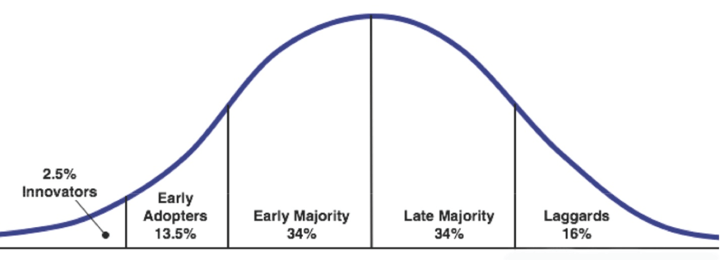
Innovation adoption curve demonstrates the market maturity stage. Image source: here.
Note, that market maturity is also a matter of whether you’re selling to techies, visionaries, pragmatist, conservatives, or laggards, and you should adjust your positioning and messaging accordingly.
✅ A mature market and existing product category
⛔️ A new/emerging market and unknown solution
Ask this question: Are you targeting a niche or mass market? How big is your total addressable market (TAM) and target market (aka potential customer base)?
A bigger mass market equals more potential customers but might also result in spreading the marketing resources too thin if you’re trying to appeal to too many potential customer segments at once.
However, if the potential customer segment is very big, there’s a good chance you can still make the most out of it by scaling your commercial processes with content.
Conversely, a niche market obviously means less potential buyers, but it also helps you focus your marketing resources more effectively. If the number of potential customers is very small, it’s probably inefficient to go with the wide-net inbound strategy, especially if the average deal size is big and/or market just emerging.
✅ A big (mass) audience
⛔️ A small (niche) market
Ask this question: What are your competitors up to?
Finally, you should consider what the (direct) competitors are doing. Are they making exactly the same moves as you, or are you first to the market?
If you’re simply copying what the market leader is doing, you won’t exactly gain any unique competitive advantage.
Note that being a late arrival does not mean that you can’t benefit from inbound marketing – it just means you probably have to work a bit harder (and smarter) to stand out from the already crowded market.
✅ A pioneer in your industry
⛔️ Late to the party
Step 3: Target audience and customer acquisition model
Ask this question: What are the defining characteristics of your Ideal Customer Profile (ICP)?
These characteristics may very well include traditional firmographic factors such as company size (SMB/Mid-market/Enterprise), industry, number of employees, tech stack, company growth rate, or geographic location.
But often times the characteristics can include quite unexpected and more specific things such as the number of invoices processed annually or even certain company values (remember the agile developer teams that are constantly trying to improve their ways of working?).
To find it out these characteristics, you will need to follow a process to create an ICP for your company and conduct qualitative customer research to get to know them.
✅ Smaller, change-savvy & agile companies
⛔️ Bigger, old-fashioned & sluggish companies
Ask this question: How are you selling to your customers, and how customers buy your product?
After you know your ideal customers, you should be able to define who you should be targeting within those companies, and also how you’re selling to them:
- Are you selling bottom-up or top-down?
- How many people are involved in the process and what are their roles? Who’s the end user? Who’s the technical advisor, gatekeeper, decision-maker, economic buyer, etc.?
- What happens during the buying process?
To be able to help these people buy you need to understand the whole buying process and everyone’s motives, and not just the decision-making criteria. And unless you dig deeper, a lot of it usually remains unseen:
- What are their pain points and what initially triggered them to look for change?
- In terms of possible solutions, how educated they are?
- What concerns they have during the buying process?
- What information they need during the buying process?
- What are the preferred information sources and channels?
- How they find you?
- What would make them consider your solution?
People aren’t obviously always googling for information and therefore leave no trace of themselves (think complex enterprise sales with long sales cycles) but once you know your customers, you can still usually leverage content in a form or another (sales enablement, account-based marketing, etc.).
✅ Short sales cycles and a simple buying process with few people involved
⛔️ Long sales cycles and a complex process with multiple people involved
Ask this question: How easy is your product to buy, set up and use for your customers?
People are naturally risk averse, thus you should be able to remove the friction from the purchase process for everyone involved in the buying process.
In many cases content marketing can be a great way to do just that, but at the end of the day it all boils down to knowing your audience: some people simply don’t Google these things and prefer other channels instead.
The same goes for the ease of use. If your product requires a complicated setup and onboarding process, relying purely on content might not be the best option.
✅ Low perceived risk and friction
⛔️ High perceived risk and friction
Closing remarks: How to move forward and improve your B2B inbound marketing
All that being said, it shouldn't come as a surprise that sometimes the best way to improve your inbound marketing is to not do it at all – or only focus on specific parts rather than go all-in.
So, what’s the moral of the story?
Oftentimes we shouldn’t be asking ourselves: “Am I doing things wrong?”, but instead: “Am I doing the wrong things?” (I'm the first one to raise my hand here.)
And to be completely honest, instead of going all in on one rigid playbook, most growth-seeking B2B companies should take a more comprehensive approach that we like to call growth marketing.
Growth marketing is not about what approach or framework or technique is superior to the other — such as:
- performance marketing vs. brand marketing,
- inbound vs. outbound,
- fish net (inbound) vs. spear (ABM),
- or any other (false) dichotomy.
Instead, it’s about choosing the approach that works for your business under specific circumstances and supports your strategic goals.
As marketing should have always been.
Curious to know how growth marketing could help your business? We're happy to help – just shoot us a message!



